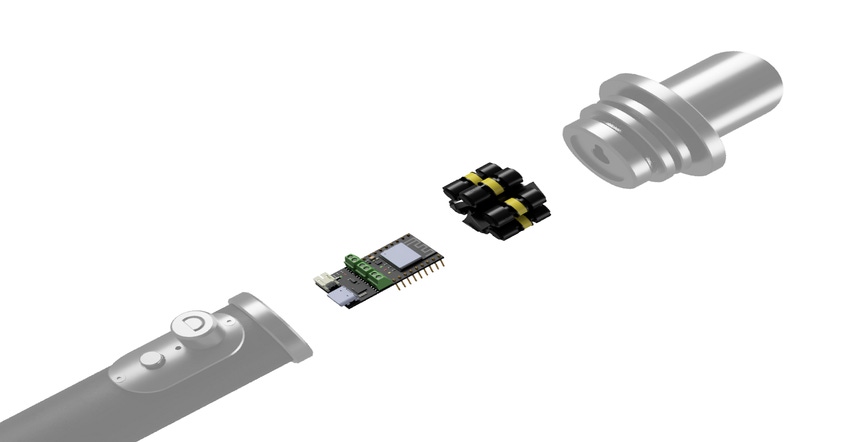Development Kit Makes Integrating Haptics Easier
Compact PCB core and chipset simplifies task of adding tactile feedback to products.

Haptics, the addition of tactile feedback to an electronics device to make user interaction easier, continues to gain popularity in many products. But the task of integrating haptics, which involves selecting appropriate motors and other parts, is not always straightforward. Enter Titan’s Titan Core, a compact haptics development board and production-ready module.
The Titan Core is a fully-contained haptics PCB core and ESP32 chipset the company said make haptics integration easier and more seamless. “The standard procedure is researching part numbers and getting firmware together,” said Kyle Skippon, Head of Engineering at Titan Haptics. “But developing haptics is a rare skill. You need to know which motors work with which parts.”
Skippon added that in the case of haptics, development needs to be hands-on and cannot be done through software-based simulation. Titan’s kit provides a complete development board and set of motors that can be used for prototyping, mass production, and any engineering project requiring high-quality haptics.
Compatible With Arduino
The Arduino-compatible, standalone development board features three discrete haptics channels, onboard power management w/ LiPo charging via USB C, a 3W dual-channel Class D audio amplifier + dual H-Bridge, a 32-bit ESP32 Processor with DSP, direct memory access, and an analog-to-digital converter.
The board’s three discrete motor channels core supports the connection of three motors at a time, enabling them to operate independently or synchronously. The TITAN Core is optimized for the company’s DRAKE motors but can also drive a wide range of other haptic motors as well such as ERMs (Eccentric Rotating Mass motors) and LRAs (Linear Resonant Actuators).
The board’s Arduino-compatible Core is compatible with Arduino and ESP32 Arduino libraries making it easy for beginners and advanced developers alike. Sample sketches and effects available with the Titan Core Arduino library available for download. Connectivity Bluetooth, Wi-Fi, and USB connectivity is available out-of-the-box. The design engineer can connect the Titan Core to any PC or Smartphone via Bluetooth or USB for direct haptic control in real time.
The Titan Core includes 11 GPIO pins, SPI, I2C and I2S, enabling developers to use it for any application using any number of inputs and outputs. The Titan Core also comes pre-loaded with preloaded firmware with sample effects running on vectorhaptics.org’s Open API for advanced effects creation and cross-device compatibility.
Besides the development kit, the Titan Core is available as a standalone part.
Spencer Chin is a Senior Editor for Design News covering the electronics beat. He has many years of experience covering developments in components, semiconductors, subsystems, power, and other facets of electronics from both a business/supply-chain and technology perspective. He can be reached at [email protected].
About the Author(s)
You May Also Like





